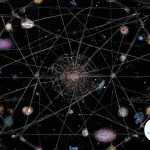The Importance of Communication in Relationship Compatibility: Exploring the Key Factors
Communication plays a vital role in the success and longevity of any relationship. Whether it’s a romantic partnership, friendship, or family bond, effective communication is essential for understanding, connecting, and resolving conflicts. This article delves into the significance of communication in relationship compatibility and provides valuable insights on how to improve communication skills for better understanding and harmony. By addressing factors that can affect compatibility and exploring strategies to overcome communication challenges, individuals can foster healthier relationships and create a strong foundation for lasting connections.
Understanding Relationship Compatibility

Relationship compatibility refers to the extent to which two individuals are suitable for each other and can establish a harmonious connection. It encompasses various aspects, including emotional, intellectual, and physical compatibility. Compatibility goes beyond shared interests or hobbies; it involves having similar values, beliefs, and life goals. When two individuals are compatible, they can navigate challenges, communicate effectively, and support each other in a healthy and fulfilling way.
Several factors influence relationship compatibility. These include:
1. Personality Traits: Compatible personalities often complement each other, bringing out the best in each other rather than conflicting. For example, introverts may find it easier to connect with someone who understands and values their need for solitude.
2. Communication Style: The way individuals communicate and express themselves can impact compatibility. Some individuals may prefer open and direct communication, while others may rely more on non-verbal cues. Understanding and adapting to each other’s communication styles can enhance compatibility.
3. Values and Beliefs: Shared values and beliefs play a crucial role in determining compatibility. Having similar perspectives on important aspects such as religion, family, and ethics can foster a stronger bond.
4. Emotional Intelligence: Emotional intelligence, which refers to the ability to recognize and manage emotions, is essential for compatibility. Individuals with high emotional intelligence can empathize with their partners, understand their needs, and effectively navigate conflicts.
5. Life Goals: Compatibility is also influenced by individuals’ long-term goals and aspirations. Having aligned goals regarding career, family, and personal growth can contribute to a more harmonious and fulfilling relationship.
By understanding relationship compatibility and the various factors that contribute to it, individuals can make informed decisions and build stronger connections with their partners.
1.1 What is Relationship Compatibility?
Relationship compatibility refers to the degree of suitability and harmony between two individuals in a romantic partnership, friendship, or familial bond. It encompasses a range of factors that determine the overall compatibility and potential success of a relationship. Compatibility goes beyond mere attraction or shared interests; it involves a deep understanding and connection between individuals.
In a compatible relationship, there is a sense of ease and understanding, where both partners can communicate openly and share their thoughts and emotions without judgment. Compatibility is not about being identical or agreeing on everything; it is about respecting and appreciating each other’s differences while finding common ground. It involves embracing the unique qualities and traits of each individual and working together to build a strong foundation.
Compatibility can be influenced by various elements, including shared values, similar life goals, effective communication, emotional intelligence, and mutual respect. Each relationship is unique, and compatibility can manifest differently in different partnerships. Some couples may thrive on intellectual stimulation and shared interests, while others may prioritize emotional connection and shared values.
Understanding relationship compatibility can help individuals make informed decisions when choosing a partner or navigating challenges in an existing relationship. By recognizing the important aspects that contribute to compatibility, individuals can prioritize mutual understanding, communication, and respect in order to build and maintain healthy and fulfilling relationships.
1.2 Factors Affecting Relationship Compatibility
When it comes to relationship compatibility, several factors come into play that can either strengthen or challenge the connection between two individuals. These factors can greatly influence the dynamics and overall success of a relationship. It’s important to understand these factors in order to navigate compatibility issues effectively. Here are some key factors that affect relationship compatibility:
1. Communication: Effective communication is vital for relationship compatibility. The way individuals communicate and express their thoughts and emotions can impact the level of understanding and connection they share. It’s essential to have open and honest communication, as well as active listening skills, in order to foster a healthy and harmonious relationship.
2. Trust and Honesty: Trust forms the foundation of any successful relationship. Without trust, compatibility can be greatly compromised. Building trust through honesty, transparency, and reliability is crucial for maintaining a strong and long-lasting bond.
3. Shared Values and Goals: Compatibility is enhanced when individuals have similar values and share common goals. Whether it’s personal, professional, or family-oriented, aligning aspirations and values can create a sense of unity and harmony in the relationship.
4. Emotional Support: Emotional support plays a significant role in relationship compatibility. Being able to understand, empathize with, and provide emotional support to one another fosters a sense of security and deepens the connection between partners.
5. Respect and Equality: Mutual respect and equality are vital for compatibility. Respecting each other’s boundaries, opinions, and autonomy helps create a balanced and healthy partnership.
6. Compatibility in Lifestyle and Interests: While shared interests aren’t the sole determinant of compatibility, having some common ground in terms of hobbies and lifestyle choices can contribute to a more enjoyable and fulfilling relationship.
7. Conflict Resolution: How couples handle conflicts and disagreements can significantly impact their compatibility. Being able to resolve conflicts in a constructive manner, with respect and effective communication, strengthens the relationship bond.
By understanding these factors and actively working on them, couples can improve their compatibility and build a strong foundation for a successful and fulfilling relationship. Remember, compatibility is not static, but rather a fluid aspect that requires continuous effort, understanding, and growth.
The Power of Communication in Relationships
1. Clear and Open Communication:
Effective communication forms the foundation of healthy relationships. It involves openly expressing thoughts, feelings, and needs while actively listening to the other person. Clear communication eliminates misunderstandings and allows partners to understand each other’s perspectives fully.
2. Active Listening and Empathy:
Active listening goes beyond hearing words; it involves fully engaging with the speaker, understanding their emotions, and showing empathy. By actively listening, individuals can validate their partner’s feelings and create a safe space for open dialogue and deeper connection.
3. Non-Verbal Communication and Understanding:
Communication goes beyond words; non-verbal cues such as facial expressions, body language, and tone of voice play a significant role. Understanding and interpreting these non-verbal signals helps partners gauge each other’s emotions and intentions accurately.
4. Enhancing Intimacy and Trust:
Communicating openly and honestly nurtures intimacy and trust in a relationship. It creates a safe environment where partners can share vulnerabilities, express desires, and work together to meet each other’s needs.
5. Conflict Resolution:
Communication is instrumental in resolving conflicts and disagreements. Expressing concerns, active listening, and finding common ground ensures that conflicts are addressed constructively and solutions are reached collaboratively.
6. Strengthening Emotional Connection:
Effective communication fosters a deep emotional connection between partners. By expressing love, appreciation, and support, partners can reinforce their bond and create a more fulfilling and satisfying relationship.
Remember, effective communication is an ongoing process that requires effort and practice. By prioritizing communication and utilizing strategies to enhance it, individuals can harness the transformative power of communication to build stronger and more resilient relationships.
2.1 Clear and Open Communication
Clear and open communication is a fundamental aspect of establishing and maintaining a healthy and compatible relationship. It involves expressing oneself honestly, listening attentively, and fostering an atmosphere of trust and understanding.
When engaging in clear and open communication, it is important to:
1. Express thoughts and feelings: Clearly communicate thoughts, opinions, and emotions to your partner. It is essential to share your perspectives openly, honestly, and respectfully, allowing both partners to understand each other better.
2. Practice active listening: Actively listen to your partner’s thoughts, concerns, and feelings without interruption or judgment. Show genuine interest by maintaining eye contact, nodding, and asking relevant questions. This demonstrates validation and promotes a deeper level of understanding.
3. Use “I” statements: Frame statements using “I” to express personal perspectives and emotions. This approach minimizes defensiveness and encourages productive dialogue. For example, say “I feel hurt when…” instead of “You always make me feel…”
4. Provide constructive feedback: Offer constructive feedback in a sensitive and compassionate manner. Focus on expressing concerns and suggestions for improvement rather than criticizing or blaming your partner. This fosters a safe space for open dialogue and growth.
5. Resolve conflicts: Address conflicts promptly and calmly. Avoid passive-aggressive behavior or suppressing emotions. Instead, work together to find compromise or solutions that satisfy both individuals. Effective conflict resolution strengthens compatibility and fosters a healthier relationship.
Implementing clear and open communication in a relationship allows both partners to feel heard, understood, and respected. It promotes trust, strengthens emotional connection, and helps navigate challenges and differences with greater ease. By prioritizing clear and open communication, couples can build a solid foundation for compatibility and long-lasting happiness.
2.2 Active Listening and Empathy
Active listening and empathy are crucial components of effective communication in relationships. When individuals actively listen and demonstrate empathy towards their partners, it creates a safe and supportive environment for open and honest communication.
Active listening involves fully focusing on and understanding what the other person is saying. It goes beyond simply hearing words; it involves paying attention to verbal and non-verbal cues. Some key aspects of active listening include:
- Providing undivided attention to the speaker, maintaining eye contact, and avoiding distractions.
- Refraining from interrupting or formulating responses while the other person is speaking.
- Showing understanding and engagement through nodding, facial expressions, and verbal cues like “I see” or “I understand”.
- Asking clarifying questions to ensure a complete understanding of the speaker’s thoughts and feelings.
Empathy is the ability to understand and share the emotions of another person. It plays a vital role in establishing emotional connection and fostering a deeper level of understanding in relationships. Some ways to cultivate empathy include:
- Putting oneself in the other person’s shoes and imagining how they might feel in a given situation.
- Expressing empathy through statements like “I can understand why you feel that way” or “That sounds really difficult.”
- Acknowledging and validating the other person’s emotions without judgment or defensiveness.
- Showcasing compassion and support by offering assistance or a listening ear.
Active listening and empathy promote effective communication by creating an atmosphere of trust and mutual understanding. When individuals feel heard and understood, it strengthens the emotional bond and paves the way for constructive problem-solving and conflict resolution in relationships. Developing these skills requires practice, but the rewards of improved communication and enhanced compatibility are well worth the effort.
2.3 Non-Verbal Communication and Understanding
Non-verbal communication is a powerful aspect of interpersonal communication that greatly influences relationship compatibility. It refers to the messages conveyed through body language, facial expressions, gestures, and tone of voice. Understanding and effectively interpreting non-verbal cues can deepen connection and reduce misunderstandings. Here are some key points to consider:
1. Body Language: The way individuals position their bodies, their posture, and their gestures can convey a wealth of information. For example, crossed arms may indicate defensiveness or discomfort, while open arms may signal openness and receptiveness.
2. Facial Expressions: Facial expressions are a crucial component of non-verbal communication. Smiles, frowns, raised eyebrows, and eye contact can communicate emotions and intentions. Being aware of these cues and responding appropriately can nurture understanding and empathy.
3. Tone of Voice: The tone of voice used in communication carries significant meaning. The way words are spoken, such as a sarcastic tone or a calm and soothing voice, can impact the interpretation of the message. Being mindful of how tone is used can foster effective communication.
4. Physical Touch: Physical touch is another form of non-verbal communication that can strengthen intimacy and connection. Appropriate touch, such as a hug, hand-holding, or a pat on the back, can convey support, love, and reassurance.
5. Eye Contact: Maintaining eye contact during conversations is a powerful non-verbal cue that shows interest, attentiveness, and respect. It can establish a sense of connection and trust between individuals.
By being attentive to non-verbal cues and understanding their significance, individuals can improve their ability to interpret messages accurately and respond accordingly. Non-verbal communication and understanding can enhance relationship compatibility by fostering a deeper level of connection and intimacy.
Communication Challenges in Relationships

Communication challenges can arise in relationships, hindering effective understanding and connection between individuals. These challenges can significantly impact compatibility if not addressed and resolved. Some common communication challenges include:
1. Language and Cultural Differences: Language barriers or differences in cultural backgrounds can create misunderstandings and misinterpretations. It is crucial to be patient, open-minded, and willing to learn from each other’s cultural perspectives.
2. Emotional Communication Barriers: Difficulties in expressing emotions can hinder effective communication. Some individuals may struggle to articulate their feelings or may have difficulty understanding and empathizing with their partner’s emotions. Building emotional intelligence and practicing active listening can help overcome these barriers.
3. Technology’s Impact on Communication: The increasing reliance on technology in communication can pose challenges. Misinterpretations can occur through text messages or emails without the benefit of tone or body language. It is important to balance virtual communication with face-to-face interactions to foster better understanding.
Navigating these challenges requires effort and commitment from both individuals in a relationship. It is essential to prioritize open and honest communication, actively listen to each other, and seek clarification when needed. Additionally, practicing patience, empathy, and understanding can help overcome communication obstacles and enhance compatibility in relationships.
3.1 Language and Cultural Differences
Language and cultural differences can pose significant challenges to communication in relationships. When partners come from different linguistic or cultural backgrounds, it can lead to misunderstandings, misinterpretations, and even conflicts. Here’s why language and cultural differences can impact relationship compatibility:
1. Language Barrier: When partners speak different languages, it becomes crucial to find effective ways to communicate. Miscommunications due to language barriers can result in frustrations and hinder the ability to express thoughts, feelings, and needs accurately. Finding common ground, learning each other’s languages, or using translation tools can help overcome this challenge.
2. Cultural Norms and Communication Styles: Each culture has its own set of norms, values, and communication styles. These differences can influence the way individuals express themselves and interpret verbal and non-verbal cues. For example, in some cultures, direct confrontation and disagreement may be seen as disrespectful, while in others, it may be valued as honesty. Understanding and respecting each other’s cultural nuances can play a crucial role in bridging communication gaps.
3. Misinterpretation of Gestures and Body Language: Gestures and body language often convey meaning in communication. However, these non-verbal cues can vary significantly across cultures. What may be considered a friendly gesture in one culture can be seen as offensive or inappropriate in another. Partners need to establish open communication about their cultural differences and be willing to learn and adapt to each other’s gestures and body language.
4. Values and Beliefs: Language and cultural differences can also impact compatibility when it comes to shared values and beliefs. Different cultural backgrounds may shape individual perspectives on relationships, gender roles, family dynamics, and more. It’s important to engage in open discussions and embrace diversity to find common ground and ensure both partners feel valued and understood.
Navigating language and cultural differences requires a willingness to learn, adapt, and embrace diversity. It’s essential to prioritize effective communication, seek clarification when needed, and celebrate the richness that different languages and cultures bring to a relationship.
3.2 Emotional Communication Barriers
Emotional communication barriers can significantly impact the compatibility of a relationship. These barriers arise when individuals struggle to effectively express and understand their emotions, leading to misunderstandings and conflicts. It is crucial to identify and address these barriers to ensure healthy communication and relationship growth.
Fear of Vulnerability: One common emotional communication barrier is the fear of vulnerability. Some individuals may find it challenging to open up and express their true feelings due to past hurt or fear of rejection. This fear can prevent genuine emotional connection and hinder the development of compatibility.
Emotional Baggage: Past experiences and unresolved emotional issues can create barriers in communication. Individuals carrying emotional baggage may struggle to trust or fully open up to their partners, hindering effective communication and understanding.
Lack of Emotional Awareness: Some individuals may have difficulty identifying and articulating their emotions, making it challenging for their partners to understand them. This lack of emotional awareness can lead to frustration and miscommunication, affecting compatibility.
Defensiveness: When individuals become defensive and reactive during discussions or conflicts, it can impede effective emotional communication. Defensiveness prevents the expression of genuine emotions and inhibits the resolution of conflicts, ultimately hindering compatibility.
Communication Style Differences: Different communication styles can also create emotional communication barriers. For example, one partner may prefer to discuss emotions openly, while the other may be more reserved or prefer indirect communication. These differences can lead to misunderstandings and decreased compatibility if not addressed and understood.
To overcome these emotional communication barriers, individuals can take several steps. This may include fostering emotional awareness through self-reflection and self-expression exercises, as well as creating a safe and non-judgmental space for open communication. Additionally, seeking couples therapy or professional guidance can help navigate and overcome these barriers, promoting better emotional communication and ultimately enhancing compatibility and relationship satisfaction.
3.3 Technology’s Impact on Communication
In today’s digital age, technology has become an integral part of our lives, including how we communicate. While technology provides convenience and accessibility, it can also have both positive and negative impacts on relationship communication.
One of the positive effects of technology on communication is the ability to stay connected over long distances through various platforms such as video calls, messaging apps, and social media. These tools can help maintain relationships when physical proximity is not feasible, allowing for ongoing communication and emotional connection.
On the other hand, technology can create challenges in communication within relationships. The constant presence of smartphones and other devices can lead to distractions, with individuals being more focused on their screens than on engaging in meaningful conversations with their partners. This can create a sense of disconnect and hinder effective communication.
The use of technology can sometimes lead to misinterpretation or misunderstanding. Text-based communication lacks the nuances of facial expressions and tone of voice, making it easier for messages to be misconstrued. A harmless comment can be misinterpreted as passive-aggressive, leading to unnecessary conflicts and misunderstandings.
Additionally, the presence of social media can create unrealistic expectations and comparisons within relationships. It can lead to feelings of inadequacy or jealousy when comparing one’s own relationship to the seemingly perfect lives portrayed by others online. This can negatively impact communication and contribute to feelings of dissatisfaction.
To navigate the impact of technology on communication, it is important for individuals to establish boundaries and dedicate quality time for face-to-face interactions. Setting aside device-free moments and actively communicating about the challenges technology poses can help couples maintain a healthy balance between technology use and genuine connection.
While technology offers numerous benefits for communication, being mindful of its impact and actively working on maintaining open, meaningful, and technology-free communication moments in relationships is essential for fostering compatibility and deepening connections.
Improving Communication for Better Compatibility
Improving communication skills is crucial for enhancing compatibility in relationships. By adopting certain strategies and techniques, individuals can foster understanding, resolve conflicts, and establish stronger connections with their partners. Here are some effective ways to improve communication for better compatibility:
1. Building Trust and Establishing Safe Spaces: Trust forms the foundation of open and honest communication. Creating a safe and non-judgmental space where individuals feel comfortable expressing their thoughts and feelings is essential. It involves actively listening without interrupting, validating each other’s emotions, and being vulnerable and authentic.
2. Learning Effective Conflict Resolution: Conflicts are inevitable in any relationship, but how they are handled can significantly impact compatibility. Learning effective conflict resolution techniques, such as using “I” statements, active listening, and finding common ground, can help couples navigate disputes and reach mutually satisfying resolutions.
3. Seeking Professional Help or Counseling: Sometimes, communication challenges may require the guidance of a professional. Relationship counseling or therapy can provide a neutral and supportive environment for couples to address underlying issues, learn new communication skills, and strengthen their bond. Professional help can be beneficial for couples seeking to improve compatibility.
4. Practicing Empathy and Understanding: Empathy is the ability to understand and share the feelings of another person. Cultivating empathy helps individuals better comprehend their partner’s needs, perspectives, and emotions. It involves actively listening, validating their experiences, and endeavoring to see things from their point of view without judgment.
5. Enhancing Non-Verbal Communication: Non-verbal cues, such as facial expressions, body language, and touch, play a significant role in communication. Paying attention to these cues and conveying interest, support, and affection through non-verbal means can strengthen emotional connection and compatibility.
Taking steps to improve communication skills can greatly enhance compatibility in relationships. By fostering trust, learning effective conflict resolution techniques, seeking professional help when needed, practicing empathy, and enhancing non-verbal communication, individuals can create a more fulfilling and harmonious bond with their partners.
4.1 Building Trust and Establishing Safe Spaces
Building trust and establishing safe spaces is crucial for effective communication and enhancing relationship compatibility. Trust forms the foundation of any strong relationship, and without it, communication can become strained and ineffective. Here are some key strategies for building trust and creating safe spaces:
Open and Honest Communication: Foster an environment where both partners feel comfortable expressing their thoughts, feelings, and concerns without fear of judgment or criticism. Encourage open and honest communication, and actively listen to your partner’s perspective.
Consistency and Reliability: Consistency in behavior and actions helps build trust over time. Be reliable and follow through on your commitments. This gives your partner a sense of security and reassurance.
Vulnerability and Empathy: Create a safe space where vulnerability is embraced. Sharing fears, insecurities, and past experiences with each other can deepen trust and strengthen the emotional connection. Practice empathy by understanding and validating your partner’s emotions.
Transparency: Be transparent about your thoughts, feelings, and decisions that may affect the relationship. Avoid keeping secrets or hiding important information, as this can erode trust.
Apologize and Forgive: Mistakes and conflicts are inevitable in any relationship. When you make a mistake, take responsibility for your actions and sincerely apologize. Similarly, be willing to forgive your partner and let go of grudges to rebuild trust.
Building trust takes time, patience, and consistency. Remember that trust is a two-way street, and both partners must actively work towards developing and maintaining it. By prioritizing trust and establishing safe spaces for open communication, couples can foster a strong foundation of compatibility and create a relationship built on trust and understanding.
4.2 Learning Effective Conflict Resolution
Effective conflict resolution is a crucial skill for enhancing communication and promoting relationship compatibility. Conflicts are bound to arise in any relationship, but how they are resolved can determine the strength and longevity of the bond. Here are some strategies for learning effective conflict resolution:
1. Active Listening: Actively listening to your partner’s concerns and perspectives without interrupting or dismissing them is essential. Practice empathy and strive to understand their point of view.
2. Calm and Respectful Communication: Avoid escalating conflicts by maintaining a calm and respectful tone during discussions. Use “I” statements to express your feelings and avoid blaming or criticizing your partner.
3. Compromise and Flexibility: Seek mutually beneficial solutions by being open to compromise and flexible in finding common ground. Understand that both partners may need to make adjustments to meet each other’s needs.
4. Take Time-Outs: If emotions are running high and constructive communication seems challenging, it’s okay to take a break. Give yourselves some time to cool down and reflect before readdressing the issue.
5. Seek Mediation or Counseling: In more complex or deeply rooted conflicts, seeking mediation or professional counseling can provide a safe and neutral space for communication and resolution. A trained professional can guide you through the process and help facilitate healthy dialogue.
By learning and implementing effective conflict resolution strategies, couples can navigate disagreements in a productive manner, fostering understanding, and strengthening their compatibility. It allows them to address underlying issues, build trust, and work towards creating a harmonious and fulfilling relationship.
4.3 Seeking Professional Help or Counseling
In some cases, when communication challenges persist or become overwhelming, seeking professional help or counseling can be a beneficial step towards improving relationship compatibility. Professional therapists or counselors have the necessary skills and expertise to guide couples through various issues and help them strengthen their communication skills. They provide a safe and neutral space where partners can express their concerns, deepen their understanding of each other, and learn effective strategies to enhance their communication.
Therapy sessions may involve couples therapy, individual therapy, or a combination of both, depending on the specific needs of the individuals involved. A trained therapist can help couples identify underlying issues that may be affecting their communication and provide practical tools and techniques to address these challenges. They can also facilitate healthy and constructive dialogue between partners, fostering empathy and mutual understanding. Therapists can assist couples in developing conflict resolution skills, managing differences, and rebuilding trust if it has been compromised. The guidance and support provided by a professional can be invaluable in navigating complex relationship dynamics and promoting compatibility.
While seeking professional help may feel daunting, it is essential to remember that it is a proactive and positive step towards improving the overall health and success of the relationship. Therapeutic interventions can offer a fresh perspective, empower individuals with new communication strategies, and create a supportive environment for personal growth and relationship development. Taking the initiative to seek professional help demonstrates a commitment to the relationship and a willingness to invest in its long-term compatibility.
Conclusion

In conclusion, communication is undoubtedly crucial in relationship compatibility. It serves as the foundation for understanding, connection, and resolving conflicts. Clear and open communication allows individuals to express themselves honestly and ensures that both parties are on the same page. Active listening and empathy enable partners to understand and validate each other’s emotions, fostering deeper emotional intimacy. Non-verbal communication, such as body language and gestures, adds another layer of understanding and helps partners communicate non-verbally. However, communication challenges can arise due to language and cultural differences or the impact of technology on communication. It is important to address these challenges and find effective ways to overcome them. By building trust, establishing safe spaces, learning effective conflict resolution, and seeking professional help when needed, individuals can improve their communication skills and enhance relationship compatibility. A strong and healthy foundation of communication sets the stage for long-lasting and fulfilling relationships.
Frequently Asked Questions
1. What happens if couples have different communication styles?
Having different communication styles can pose challenges in a relationship. It may lead to misunderstandings, misinterpretations, and difficulties in expressing needs and emotions. However, couples can overcome this by practicing active listening, seeking understanding, and finding common ground in their communication approaches.
2. Can relationship compatibility change over time?
Yes, relationship compatibility can evolve over time. As individuals grow and change, their values, goals, and priorities may also shift. It requires open and ongoing communication between partners to ensure that compatibility is nurtured and maintained throughout the relationship.
3. How important is physical compatibility in a relationship?
Physical compatibility can contribute to overall relationship satisfaction, but it is not the sole determining factor of a successful partnership. Emotional, intellectual, and spiritual connections also play vital roles. It is important to find a balance between physical attraction and other essential components of compatibility.
4. Can cultural differences affect relationship compatibility?
Cultural differences can impact relationship compatibility, as they can influence values, beliefs, and communication styles. However, with open-mindedness, mutual respect, and a willingness to understand and embrace each other’s cultures, couples can navigate these differences and build a strong and harmonious bond.
5. Is it necessary to have the same hobbies and interests for compatibility?
No, it is not necessary to have the same hobbies and interests for compatibility. While shared activities can enhance bonding and create common ground, having different interests can also bring excitement and new experiences to a relationship. Mutual respect and support for each other’s passions are key.
6. Can compatibility be measured by astrology?
Astrology can provide insights into certain personality traits and compatibility patterns. However, it is important to approach astrology with an open mind and not solely rely on it to determine relationship compatibility. Building a strong foundation through effective communication and shared values is crucial.
7. Can relationship compatibility be improved over time?
Yes, relationship compatibility can be improved over time through conscious efforts. This can include enhancing communication skills, understanding each other’s needs and perspectives, and actively working on shared goals and values. Continuous growth and willingness to adapt contribute to an evolving and compatible relationship.
8. Can financial differences affect relationship compatibility?
Financial differences can pose challenges in a relationship if not managed properly. Varying spending habits, attitudes towards money, and financial goals can lead to conflicts. However, open communication, compromise, and shared financial planning can help overcome these differences and foster compatibility.
9. How does conflict resolution impact relationship compatibility?
Effective conflict resolution is vital for maintaining relationship compatibility. Couples who can address and resolve conflicts in a respectful and constructive manner have a higher chance of building a lasting bond. Learning to listen, empathize, and find mutually beneficial solutions strengthens compatibility.
10. Should couples seek professional help if they struggle with compatibility?
Seeking professional help, such as couples therapy or counseling, can be beneficial for couples struggling with compatibility issues. Trained professionals can provide guidance, tools, and techniques to improve communication, resolve conflicts, and enhance overall compatibility in the relationship.
References
Frequently Asked Questions
1. How does relationship compatibility impact overall happiness?
Relationship compatibility plays a crucial role in determining overall happiness. When two individuals are compatible, they are more likely to have shared values, interests, and goals, which leads to better understanding and fulfillment in the relationship.
2. Can communication differences affect relationship compatibility?
Absolutely. Communication differences can significantly impact relationship compatibility. If partners struggle to understand each other’s communication styles, it can lead to misunderstandings, frustration, and a lack of emotional connection.
3. What is the role of active listening in relationship compatibility?
Active listening is essential for relationship compatibility as it demonstrates genuine interest and empathy towards the partner’s thoughts and feelings. It fosters understanding, strengthens emotional bonds, and helps partners feel heard and valued.
4. How can non-verbal communication improve compatibility?
Non-verbal communication, such as body language and facial expressions, can enhance compatibility by providing additional cues for understanding emotions and intentions. These non-verbal signals can help partners connect on a deeper level and bridge communication gaps.
5. How do language and cultural differences affect communication in relationships?
Language and cultural differences can pose challenges in communication for partners from diverse backgrounds. Misunderstandings and misinterpretations may occur more frequently, leading to difficulties in expressing emotions and thoughts accurately.
6. What are some emotional barriers to communication in relationships?
Emotional barriers, such as fear of vulnerability, past traumas, and insecurities, can hinder effective communication in relationships. These barriers can prevent partners from expressing themselves honestly and openly, impacting compatibility.
7. Can technology negatively impact communication in relationships?
Yes, technology can have a negative impact on communication in relationships. Excessive use of smartphones and social media can lead to distractions, decreased face-to-face interaction, and a lack of genuine connection, ultimately affecting compatibility.
8. How does building trust contribute to better compatibility?
Building trust is vital for compatibility as it creates a safe and secure environment for effective communication. Trust allows partners to be vulnerable, share their thoughts, and work through challenges together, fostering a stronger bond.
9. What is effective conflict resolution and how does it improve compatibility?
Effective conflict resolution involves actively listening, expressing needs and concerns, and finding mutually beneficial solutions. By resolving conflicts in a healthy and respectful manner, compatibility is strengthened, and the relationship can grow.
10. When should couples consider seeking professional help for communication issues?
Couples should consider seeking professional help when they find it challenging to communicate effectively and resolve conflicts on their own. A trained therapist can provide guidance, tools, and techniques to improve communication, ultimately enhancing compatibility.








